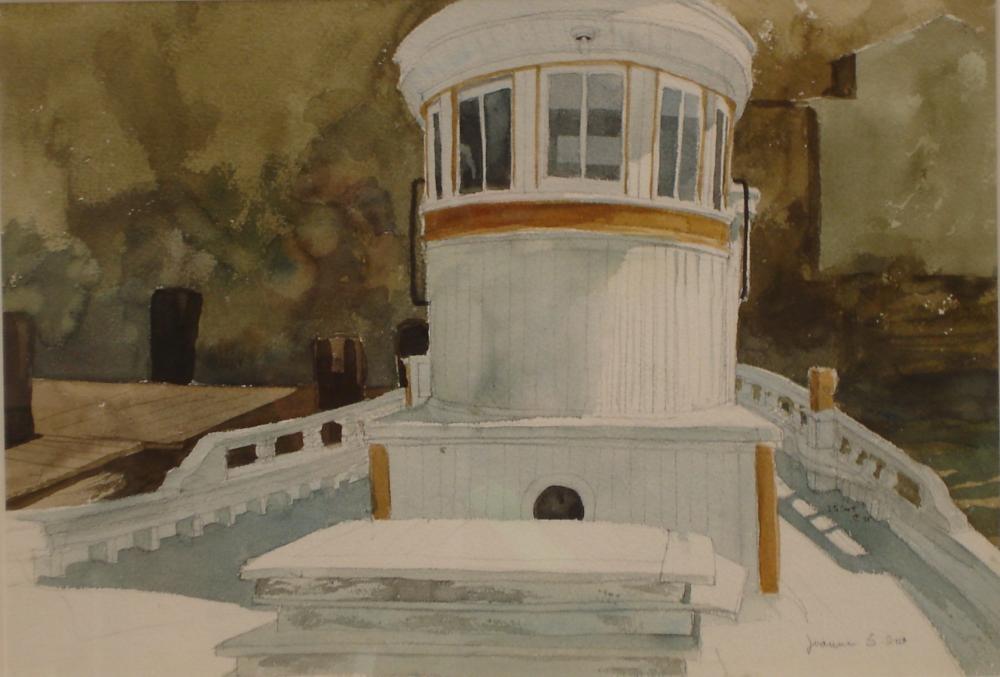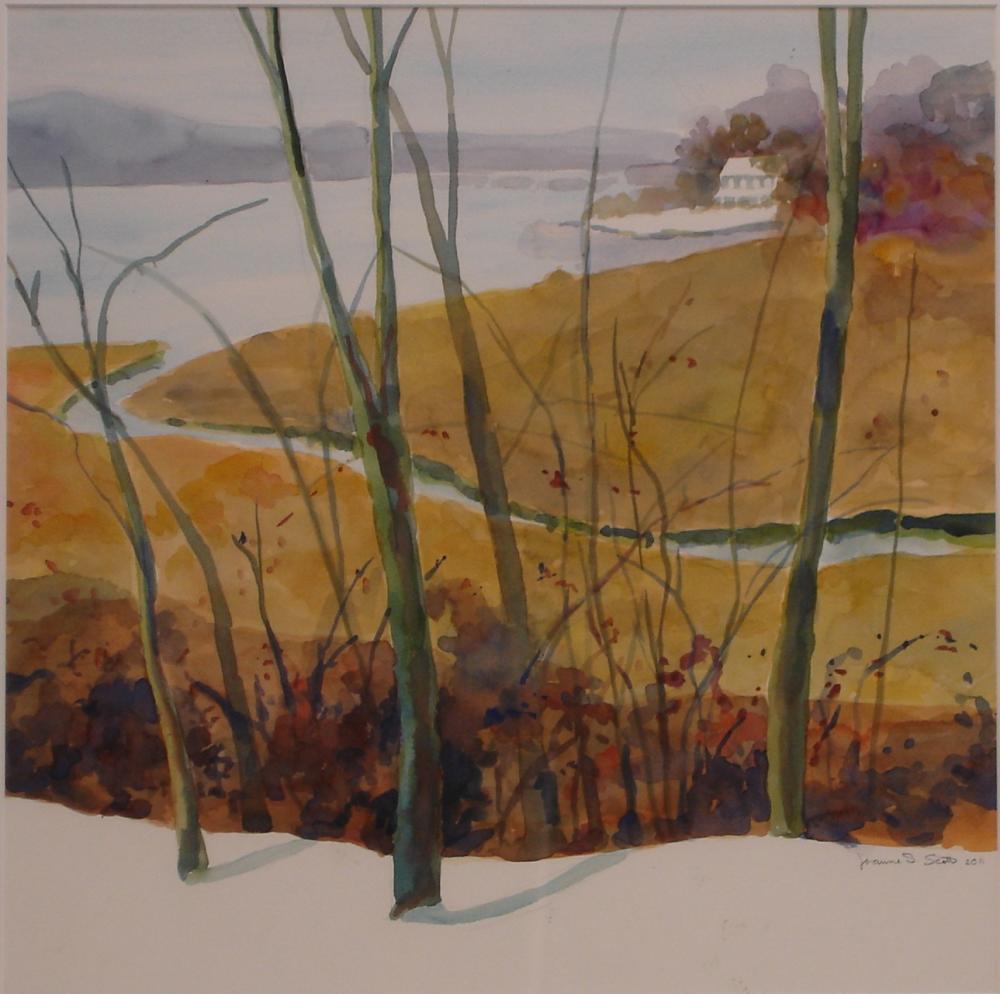Visiting Joanne Scott’s show, Elements, at RiverArts is almost like visiting her studio. On view through February 25, it’s a chance to see what this accomplished Chestertown artist is working on currently, but you also get a fascinating taste of her work over the past five decades.
Half the show presents recent work, intriguingly mixed with an equal number of works dating back as far as 1965. It’s a teasing glimpse, kind of a half retrospective, of Scott’s fresh and engaging work, and it makes you wish you could see more.
Deeply influenced by her many years of living near the water, both in the Chesapeake region and on Maine’s Monhegan Island, Scott is primarily a landscape painter. She explores both open vistas and intimate views of the living world, always experimenting with color, composition and ways of capturing the mood of each moment. Throughout her work, there’s a sense of awe at the beauty and pure aliveness of the natural world.

“Orme’s Buy Boat,” watercolor 1972
The broad marsh flooded with light in “River Marsh,” an acrylic painting from 2017, hums with vitality as the billowing, heat-hazed trees beyond lean inward as if in conversation with two luminous white clouds. In her close-up paintings of flowers, such as “Eight Poppies” from 1985, each blossom is an individual, full of energy and character. The effect is even more so in her three new poppy watercolors painted in 2017 where each flower is animated with sketchy pencil lines and crisp washes in delicate shades of pink casually but succinctly defining their papery petals.
In work that is all about close observation, Scott explores how shadow sculpts the deck of a buy boat, how leaves spread out to catch sunlight, and how the weightlessness of a luminous moon underscores the quietude of the nocturnal earth below. Her work has always hovered between realism and abstraction. Sheets of ice around a boat dissolve into washy fields of textured color, while the clouds towering over a flat Eastern Shore landscape become a study of color and radiant energy.
Part of the pleasure of Scott’s work is that she celebrates the things we love so much about the outdoors. There’s a warm, familiar feeling about her water-rounded pebbles, graceful boats and rippling water. Without pretension or romanticizing, she paints them in a clear, forthright way.
But while her work may seem effortless, there’s a great deal of skill and planning behind it, and it’s fun to scout out her methods in the underlying sketches and the layers of brushstrokes describing shimmering light and water. Through decades as a working artist and teacher of drawing and painting, Scott has honed her process, and there’s a sense throughout this show that she revels in finding both bold and nuanced ways to convey her experience of each scene. Perhaps that’s why she included “Belfast Series #3 Study and Print” from 1986. It offers a fascinating look at how the study, a confident pencil sketch of light and shadow falling across a gabled house, served as a planning tool for the print, an inviting aquatint etching.
“Heron Point Look Out,” a watercolor from 2011, says a lot about her skill in conveying her deep affection for our watery landscapes. In this snow scene, she captured a grove of slim trees glimpsed in a slow, graceful dance as if mimicking the marshy creek below as it winds out to the river. Masterfully simplifying her forms, a few strokes of gray wash convey a distant riverside house and the merest suggestion of Chestertown bridge beyond.

“Heron Point Look Out,” watercolor, 2011
There’s something about the work of an elder artist that is spare and radiant—look at de Kooning’s late paintings or Matisse’s cut-outs. Scott, too, has found this uncomplicated simplicity, and it’s a pleasure to share in her appreciation as she reveals our familiar world in pencil and paint.
Mary McCoy is an artist and writer who has the good fortune to live beside an old steamboat wharf on the Chester River. She is a former art critic for the Washington Post and several art publications. She enjoys kayaking the river and walking her family farm where she collects ideas and materials for the environmental art she creates, often in collaboration with her husband Howard. They have exhibited their work in the U.S., Ireland, Wales and New Zealand.



Write a Letter to the Editor on this Article
We encourage readers to offer their point of view on this article by submitting the following form. Editing is sometimes necessary and is done at the discretion of the editorial staff.